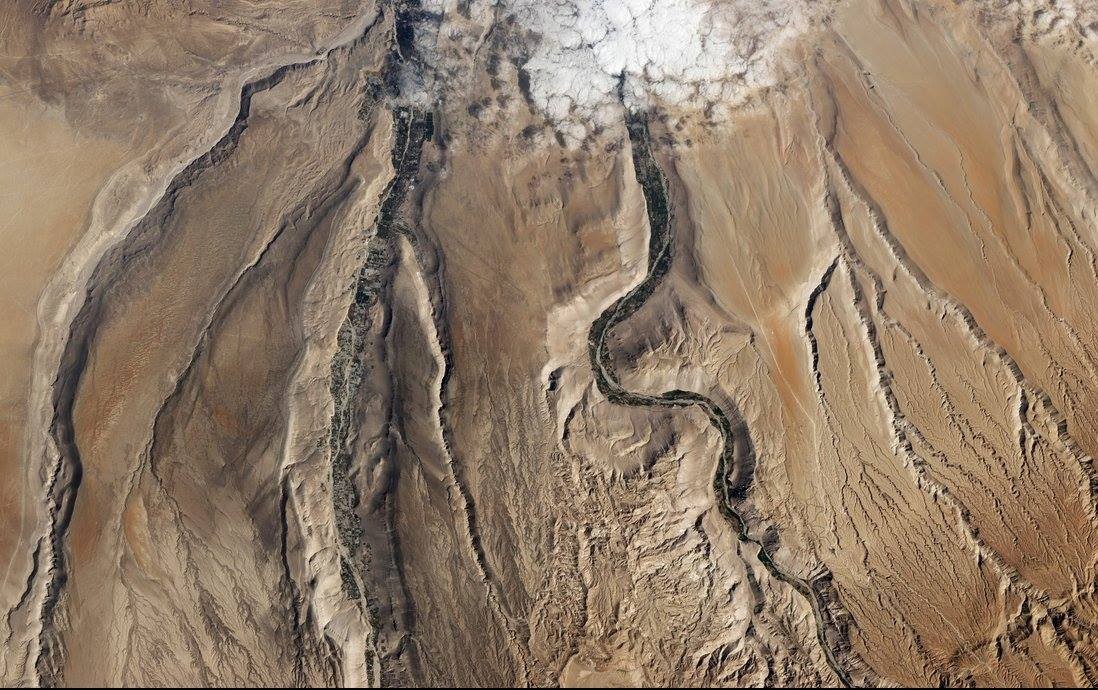The barren nature of the landscape was on full display on 19 July 2012, when the Advanced Land Imager (ALI) on NASA's Earth Observing-1 satellite acquired this image. Although a few types of cacti and other drought-tolerant species can survive in the Atacama, surfaces appear vegetation-free from ALI's perspective, leaving a veneer of tan to dominate the image.">
The barren nature of the landscape was on full display on 19 July 2012, when the Advanced Land Imager (ALI) on NASA's Earth Observing-1 satellite acquired this image. Although a few types of cacti and other drought-tolerant species can survive in the Atacama, surfaces appear vegetation-free from ALI's perspective, leaving a veneer of tan to dominate the image.">
| HOME | · | ABOUT | · | ARTICLE | · | MARKERS OFF | · | BLOG |
20010101:
 |  |

A remote plateau in far northern Chile is not a place you want to be without water. Large sections of the Atacama Desert�"often called the driest place on Earth�"receive less than a millimetre of rain per year.
The barren nature of the landscape was on full display on 19 July 2012, when the Advanced Land Imager (ALI) on NASA's Earth Observing-1 satellite acquired this image. Although a few types of cacti and other drought-tolerant species can survive in the Atacama, surfaces appear vegetation-free from ALI's perspective, leaving a veneer of tan to dominate the image.
Attribution: NASA Earth Observatory
Licence: Not known
